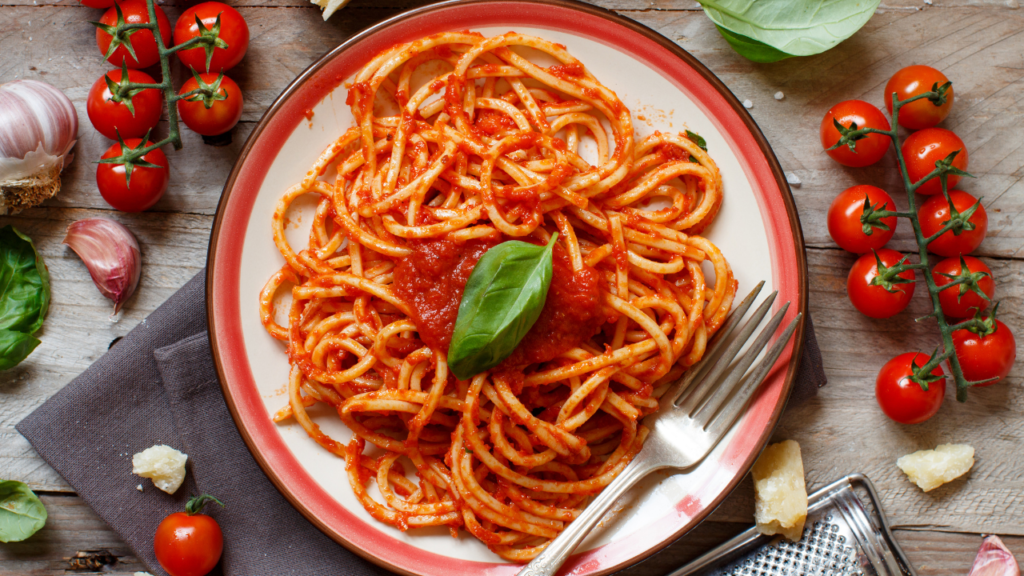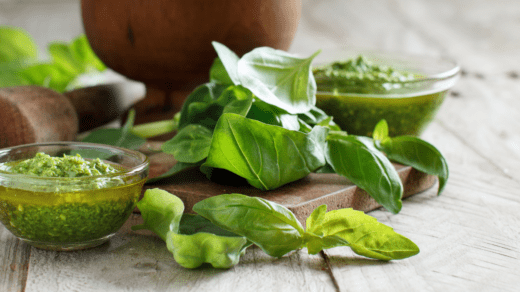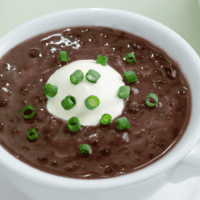Hey There! Some links on this page are affiliate links, which means that as an Amazon Associate, I may earn a small commission at no extra cost to you. I greatly appreciate your support! Learn more on my Affiliate Disclosure page.
Welcome to your kitchen adventure, where we’ll transform simple ingredients into a delicious, homemade tomato sauce. This recipe is designed for everyone, whether you’re a seasoned chef or just beginning to explore the joy of cooking.
With Chef Mark Sandoval’s easy-to-follow steps and basic ingredients, you’ll create a sauce that will elevate any dish. Let’s dive into this culinary experience and discover how to make your very own tomato sauce from scratch.
Why You Will Love This Recipe

This homemade tomato sauce is all about flavor, simplicity, and versatility. Imagine a sauce that brings out the rich, sweet, and slightly tangy flavors of tomatoes, balanced perfectly with aromatic herbs.
Whether preparing a quick weeknight pasta or enhancing a gourmet dish, this sauce will be your go-to. The best part? It’s easy to make, requires minimal ingredients, and can be customized to suit your taste. Plus, it stores beautifully, making meal prep a breeze.
Homemade Tomato Sauce Ingredients

In this section, we’ll review each ingredient, explaining its role in the recipe. Understanding what each ingredient does will help you appreciate the balance of flavors and textures in your tomato sauce.
| Ingredient | Description |
|---|---|
| Garlic – minced | It adds a fragrant and slightly spicy base to the sauce. |
| San Marzano tomatoes(crushed and whole) – medium dice | Known for their sweet flavor and low acidity, these tomatoes are the star of the sauce. |
| Mirepoix vegetables (onion, celery, and carrot) | This classic trio adds depth and a natural sweetness to the sauce. |
| Oregano – chopped | Offers a robust herbal note, bringing earthiness to the sauce. |
| Basil – chopped | Fresh basil adds a sweet, aromatic touch that complements the tomatoes. |
| Bay leaves | Enhance the complexity of the sauce with a subtle, woodsy flavor. |
| Extra virgin olive oil | Provides richness and a fruity undertone, helping to sauté the vegetables. |
| Fresh black pepper | Adds a hint of spice and depth to the overall flavor profile. |
| Kosher salt | Enhances and balances the flavors of all the ingredients. |
| Sugar | A small amount of sugar helps to neutralize the acidity of the tomatoes. |
Kitchen Tools You’ll Need

Before we start cooking, let’s ensure you have all the necessary tools. Having the right tools on hand will make the cooking process smoother and more enjoyable.
| Tool | Description |
|---|---|
| Cutting board | Provides a stable surface for chopping and preparing ingredients. |
| Chef’s knife | A sharp, versatile knife essential for chopping, dicing, and mincing. |
| Stockpot | A large pot where the sauce will simmer to perfection. |
| Wooden spoon | Ideal for stirring the sauce without scratching your cookware. |
| Kitchen towels | Useful for cleaning up spills and drying your hands while cooking. |
| Kitchen bowl | A bowl to hold your prepped ingredients before they go into the pot. |
Step-By-Step Recipe Instructions – VIDEO
Now that we have all the ingredients and tools ready, it’s time to start cooking! Follow these step-by-step instructions to make your homemade tomato sauce.
Prepare the Ingredients:
- Start by prepping all your ingredients.
- Mince the garlic, dice the San Marzano tomatoes, and chop the mirepoix vegetables (onion, celery, and carrot) into small, uniform pieces. This step ensures that everything cooks evenly and blends well in the sauce.
- Also, chop the oregano and basil and set everything aside in separate bowls.
Heat the Olive Oil:
- Place your stock pot over medium heat and add the extra virgin olive oil.
- Allow the oil to heat until it shimmers but does not smoke. This will ensure that the garlic and vegetables sauté properly without burning.
Sauté the Garlic and Mirepoix:
- Add the minced garlic to the pot and sauté for 30 seconds until fragrant. Be careful not to let the garlic brown too much, as it can turn bitter.
- Then, add the mirepoix vegetables—onion, celery, and carrot—to the pot.
- Cook them until they are softened and starting to caramelize, about 5-7 minutes. This step builds the flavor base of your sauce.
Add the Tomatoes:
- Once the mirepoix is ready, it’s time to add the star ingredient: the diced and crushed San Marzano tomatoes.
- Stir them into the pot, ensuring they mix well with the sautéed vegetables.
- Let the tomatoes cook down for about 10 minutes, allowing them to release their juices and start breaking down.
Season the Sauce:
- Now it’s time to season your sauce.
- Add the chopped oregano, basil, bay leaves, kosher salt, fresh black pepper, and a pinch of sugar. The sugar helps balance the tomatoes’ acidity, creating a well-rounded flavor.
- Stir everything together and bring the sauce to a gentle simmer.
Simmer the Sauce:
- Reduce the heat to low, cover the pot, and let the sauce simmer for 30-45 minutes.
- Stir occasionally to prevent the sauce from sticking to the bottom of the pot. This simmering process allows the flavors to meld together, creating a rich and robust sauce.
Remove Bay Leaves:
- After the sauce has simmered and thickened, carefully remove and discard the bay leaves. They’ve done their job by adding depth to the sauce, but they’re not meant to be eaten.
Adjust Seasoning:
- Taste your sauce and adjust the seasoning as needed.
- If it needs more salt or pepper, add it now.
- If the sauce is too thick, add a splash of water or vegetable broth to thin it out to your desired consistency.
Tips, Tricks, and Storage Options

Here are a few extra tips to help you make the best tomato sauce possible and ensure it lasts.
- Use Fresh Ingredients: Whenever possible, use fresh herbs and high-quality tomatoes for the best flavor. Fresh ingredients make a noticeable difference in the final dish.
- Make It Ahead: This sauce tastes even better the next day. If you have time, make it a day in advance to allow the flavors to develop further.
- Freezing Options: This sauce freezes beautifully if you have leftovers or want to make a big batch to save time later. Let the sauce cool completely, then transfer it to airtight containers or freezer bags. It can be kept in the freezer for up to 3 months.
Serving Suggestions and Pairings

This tomato sauce is incredibly versatile and can be used in many dishes. Here are a few ideas to get you started:
- Over Pasta: The classic way to enjoy this sauce is over a plate of your favorite pasta. Top with grated Parmesan cheese and a sprinkle of fresh basil for a simple and satisfying meal.
- Pizza Sauce: Spread a generous layer of this sauce on your pizza dough before adding your favorite toppings. The rich tomato flavor pairs perfectly with mozzarella, pepperoni, or fresh veggies.
- As a Dip: This sauce is also a delicious dip for breadsticks, garlic bread, or even as a base for a baked egg dish like shakshuka.
Conclusion

And there you have it—your very own homemade tomato sauce, made from scratch with love and care. This sauce is not only delicious but also a testament to the joy of cooking.
Whether you use it immediately or store it for later, this tomato sauce will become a staple in your kitchen. Remember, cooking is all about experimenting and finding what works best for you, so don’t be afraid to make this recipe your own.
I hope you enjoyed making this tomato sauce as much as I did sharing it with you! If you tried this recipe, I’d love to hear how it turned out. Please leave a comment below and share your favorite ways to use this sauce.
Don’t forget to subscribe to my blog for more easy and delicious recipes.
Happy cooking!
FAQs

Can I use canned tomatoes instead of fresh ones?
Yes, canned San Marzano tomatoes are a great substitute and can save you time without sacrificing flavor. They are also widely available and often peeled, making prep work even easier.
How do I store leftover sauce?
Store any leftover sauce in an airtight container in the fridge for up to 5 days. If you want to keep it longer, freeze the sauce in freezer-safe containers or bags for up to 3 months.
Can I make this sauce without sugar?
If you prefer a sauce with less sweetness, you can easily omit the sugar. Instead, consider adding a pinch of baking soda to balance the tomatoes’ acidity.
Is there a way to make the sauce spicier?
Absolutely! Add red pepper flakes or a diced chili pepper during the sautéing stage to give your sauce a spicy kick.
Can I use dried herbs instead of fresh ones?
Yes, dried herbs can be used as a substitute for fresh ones, but remember to use about half the amount since dried herbs have a more concentrated flavor. Fresh herbs are recommended for a brighter and more vibrant taste.
What kind of olive oil is best?
Extra virgin olive oil is ideal for this recipe due to its rich and fruity flavor, which enhances the overall taste of the sauce. However, regular olive oil will still work well if you don’t have extra virgin on hand.
How do I thicken the sauce?
To thicken your sauce, let it simmer uncovered so the excess liquid evaporates, or stir in a tablespoon of tomato paste. You can also let it cook a bit longer to naturally reduce and intensify the flavors.
Can I add meat to this sauce?
Yes, you can brown ground beef, sausage, or even pancetta in the pot before adding the vegetables for a hearty, meat-based variation of the sauce. The meat will add depth and richness to the flavor, making it even more satisfying.
What’s the best way to reheat this sauce?
Reheat your sauce slowly over low heat to prevent it from burning, and stir occasionally to ensure even warming. If the sauce has thickened too much, add a splash of water or broth to reach your desired consistency.
Hey There! Some links on this page are affiliate links, which means that as an Amazon Associate, I may earn a small commission at no extra cost to you. I greatly appreciate your support! Learn more on my Affiliate Disclosure page.



























1 Response
[…] Italian-American dish combines crispy, breaded chicken cutlets smothered in gooey mozzarella and tangy tomato sauce, served on a bed of perfectly cooked […]